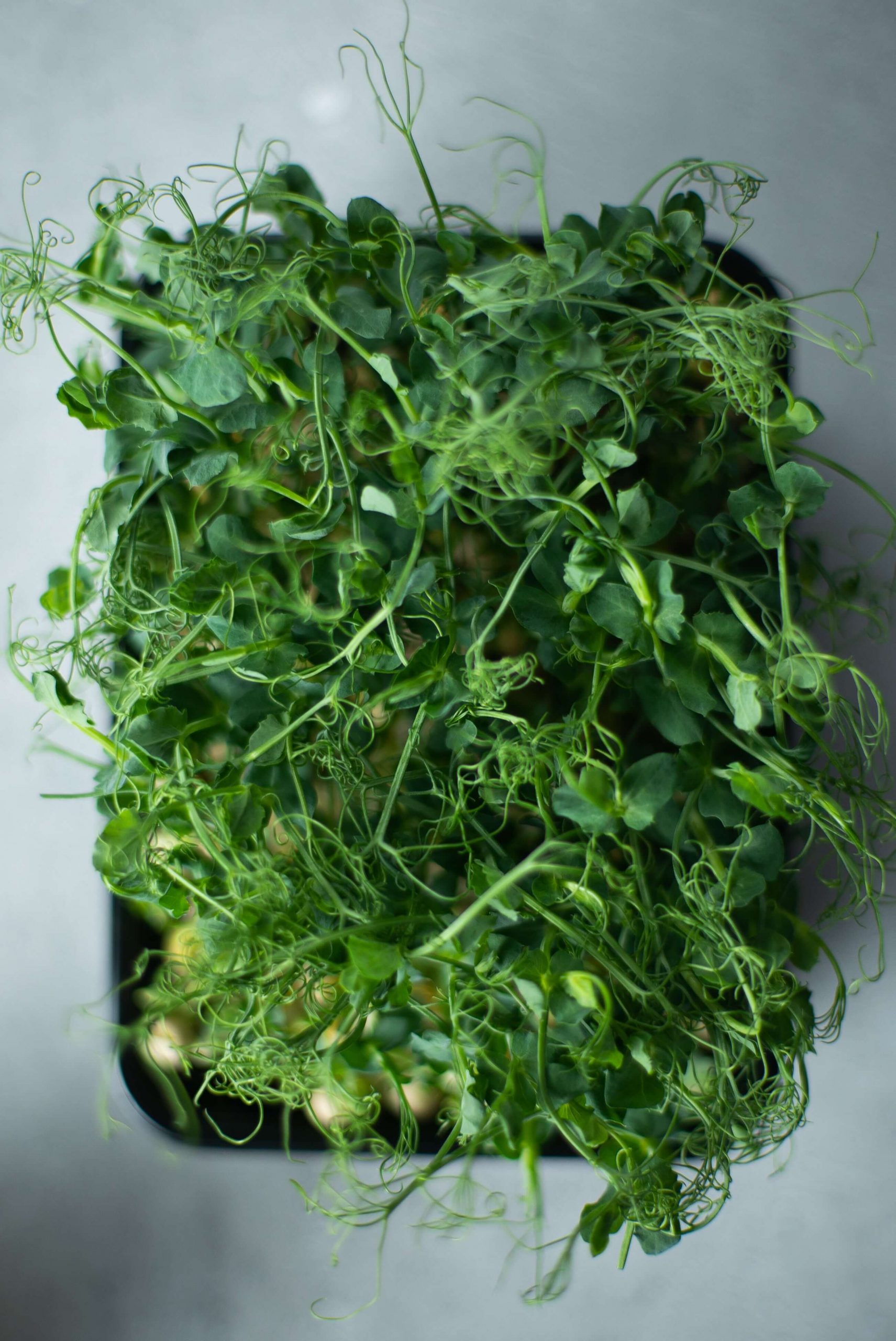Add microgreens to your plate
By Karen Langston
The signs of spring are evident on the grocer’s shelves. Look past the big, luscious organic green leaves and focus on the teeny-tiny ones looking like they just sprouted. Yup, those are the ones—they’re better known as microgreens.
The term “microgreens” is the novel clever marketing buzz referring to teeny-tiny edible greens grown in soil from the seeds of vegetables and herbs. This is not new, but sometimes we just need a sexy name to reinvigorate an old concept. Whatever you call them, consider adding microgreens to your plate.
What is the difference between microgreens, baby greens and sprouts? Microgreens are grown in soil and harvested 7-14 days after germination. If you were to let them grow longer, they would become baby greens, which are also yummy. If you continue to let them grow, you would have a mature vegetable or herb. The difference between sprouts and microgreens? Sprouts are germinated seeds, soaked in water then sprouted using the humidity in the jar with no soil.
Microgreens are gaining popularity over sprouts because they are easier to grow and safer to eat. Raw sprouts have been associated with foodborne illnesses such as salmonella, Listeria and Escherichia coli (E. coli). This happens when the humidity is not properly monitored, leading to pathogen overgrowth.
Although you can still purchase sprouts, the U.S. government warns against eating raw sprouts. I also do not recommend for those who are immunocompromised, the elderly and young children.
Why would we want to add microgreens to our plate?
Seeds require a specific amount of nutrients in order to create the energy for the plant to break through its tough exterior and sprout. It is believed the younger the plant is, the more concentrated the nutrients and energy that we can fuel our body with.
Microgreens are typically grown from the seeds of leafy greens such as arugula, kale, beets, onions, watercress, radish, chard, bok choy and cabbage, and herbs such as basil, chervil, cilantro, chives and parsley.
Let’s face it—most of us are not doing a great job of getting our daily allotment of veggies. I am just as guilty. Microgreens are a great way to boost your nutritional requirements to keep you feeling energized.
Of course, nutrients will vary depending on the plant. In general, microgreens are an excellent source of minerals, such as naturally occurring sodium, potassium, calcium, phosphorus and magnesium. This is a good thing, since most Americans eating the standard American diet are deficient in these lifesaving minerals.
What do they taste like?
If the nutrients are concentrated, so is the flavor. For instance, onions will be super strong in flavor and radishes will be super spicy. Not bad for such a teeny-tiny plant. If you are looking to spice up a sandwich or salad, add some peppery flavor with micro-radish.
Good for the planet
Microgreens are also good for the planet. Because of their short growth period, they do not deplete the soil. Thus, experts believe, these nutrition powerhouses could help in feeding the world population which, by 2050, is estimated to grow to 9 billion people. Also, microgreens do not require toxic spraying of herbicides and pesticides; a win-win for our health and the planet.
On a commercial level, microgreens are rapidly produced, resulting in low-cost, sustainable production.
In small urban gardens, numerous plantings can occur for a longer harvest period in comparison to fully mature vegetables.
Are you living in small quarters? If you have a sunny windowsill, you too can take advantage of your green thumb all year long. All microgreens require are a container, quality organic soil, sun, water, and your enthusiasm to grow your own.
How are you going to incorporate microgreens into your lifestyle?
Keep up with all of Green Living’s content by visiting our website.
Karen Langston is a certified holistic nutritionist working with clients and professionals on how to have three healthy poops a day. Poop well, be well. www.healthygutadvisor.com







